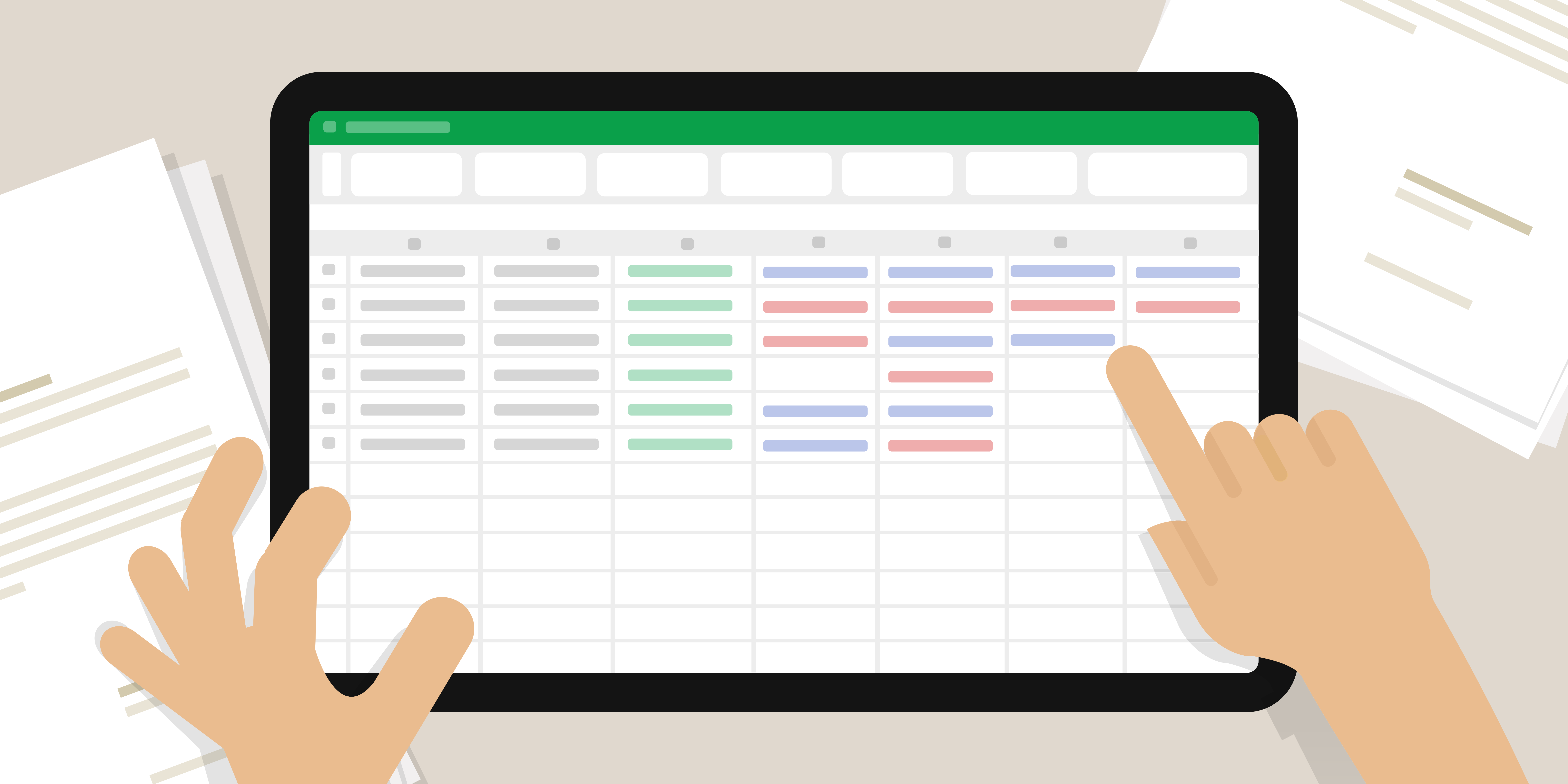
Cybersecurity Risk Assessment Template
GET MY COPY
Organizations in heavily regulated industries—such as healthcare, energy, manufacturing, finance, and education, face escalating cyber threats alongside stringent compliance requirements. Regulations like GLBA, HIPAA, SOX, and FFIEC don't merely suggest best practices—they require documented evidence of ongoing cyber security risk assessments and mitigation efforts.
Cybersecurity risk assessments are essential for evaluating existing controls, identifying vulnerabilities, and developing a roadmap to enhance defense mechanisms and ensure regulatory compliance obligations.
Why Cybersecurity Assessments Are Non-Negotiable
In regulated sectors, cybersecurity transcends threat prevention; it's about demonstrating preparedness, control, and continuous improvement. A robust cybersecurity risk assessment provides the evidence trail regulators expect while fortifying actual defenses.
Key reasons these assessments are critical:
- Regulatory Compliance: Regulations mandate proof of consistent evaluation and improvement. Assessments help detect gaps before an audit does.
- Audit Readiness: Auditors often request documentation of cyber security risk management efforts. Routine assessments and regular audits make this process easier.
- Risk Prioritization: By categorizing threats by likelihood and impact, assessments support efficient cyber risk management.
- Security Breach Prevention: Identifying weaknesses proactively helps prevent data leaks, insider threats, and vendor-related attacks.
- Cost Efficiency: Addressing vulnerabilities before breaches occur is more cost-effective than post-incident remediation.
- Stakeholder Confidence: Demonstrating a commitment to cybersecurity builds trust with clients, partners, and regulators.
- Regulatory Evolution: As frameworks evolve, assessments ensure your organization remains compliant with no regulatory risks or regulatory penalties .
Anatomy of a Solid Cybersecurity Assessment
An effective cybersecurity risk assessment typically encompasses:
- Asset Inventory: Identifying digital assets like systems, applications, and data assets.
- Threat Analysis: Determining potential threats targeting the organization.
- Vulnerability Assessments: Assessing system weaknesses and internal threats.
- Control Testing: Evaluating the effectiveness of existing defenses.
- Risk Levels Ranking: Prioritizing issues based on risk profile like impact and probability.
- Mitigation Planning: Developing strategies to address vulnerabilities.
- Compliance Alignment: Ensuring controls meet standards like HIPAA, SOX, or FFIEC
Without a structured assessment, security programs may overlook critical blind spots or fail under audit scrutiny, also risking business operations, reputational damage, all with the potential impact on business growth.
Cyber Security Risk Assessment Example
Healthcare Example
Consider a regional healthcare provider conducting a cybersecurity risk assessment and discovering:
- Electronic health records (EHRs) stored on local drives without encryption.
- Medical imaging devices running outdated operating systems not covered by central patch management.
- Inconsistent role-based access control lead to overexposure of patient data among staff.
By ranking each risk, assigning mitigation tasks, and implementing fixes, the provider strengthens patient data protection and aligns with HIPAA compliance requirements.
Finance Example
Consider a regional credit union conducting a cybersecurity risk assessment and discovering:
- Sensitive customer account data stored in an unsecured database without encryption.
- ATM and teller systems reliant on unsupported software with known vulnerabilities.
- Weak authentication protocols for wire transfer approvals between internal departments.
From there, they rank each risk, assign mitigation tasks, and begin implementing fixes. This targeted cyber security risk assessment directly supports data security and compliance with SOX and FFIEC standards.
Risk Assessment Templates That Make It Easier
Selecting the appropriate risk assessment template can streamline the process.
| Template Type | Purpose | Ideal For |
|---|---|---|
| Regular Risk Assessment Template | Baseline threat identification | Organizations new to cybersecurity |
| Compliance Risks Assessment | Aligns with HIPAA, SOX, FFIEC, etc. | Healthcare, energy, manufacturing, finance |
| Access Control Policy Template | Reviews user access and privileges | Systems handling sensitive data |
| Vendor Questionnaire Template | Evaluates third-party exposure | Companies with extensive vendor networks |
| Incident Response Policy | Assesses response readiness | Critical infrastructure providers |
| Cloud Security Template | Audits cloud platform compliance | Cloud-first or hybrid organizations |
| Network Security Template | Focuses on networks and endpoints | Large or distributed enterprises |
The Role of Third-Party Vendor Assessments in Cybersecurity Risk Management
In regulated industries, maintaining a strong cyber security posture extends beyond internal operations. Third-party vendors often access sensitive data or critical systems, necessitating their inclusion in risk assessments. Neglecting to evaluate these external parties can introduce significant risks.
Regulatory requirements such as HIPAA and FFIEC guidelines mandate that organizations ensure vendors meet equivalent industry standards.
A comprehensive vendor assessment should cover:
- Security policies, procedures
- Any risk assessment process or structured process
- Access controls
- Incident response history
- Compliance certifications
- Continuous monitoring practices
According to a Ponemon Institute study, 51% of organizations have experienced a data breach caused by a third party. Integrating vendor assessments into your risk mitigation strategy is crucial.
How Regular Cybersecurity Assessments Enhance Incident Response and Compliance
Cybersecurity risk assessments do more than identify vulnerabilities—they bolster your organization's readiness to respond to incidents. Regular assessments are vital for meeting evolving regulatory requirements and ensuring swift incident management.
A robust assessment helps you:
- Identify critical assets.
- Uncover control gaps.
- Define roles and responsibilities.
- Test incident response plans.
The NIST Cybersecurity Framework recommends integrating risk assessments into incident response planning to mitigate the likelihood and impact of cyber events. Updating your plans based on new assessment findings ensures preparedness against emerging threats.
Integrating Cybersecurity Risk Assessments into Enterprise Risk Management
Cybersecurity is now recognized as a top enterprise risk. According to a World Economic Forum report, 91% of business leaders believe a significant cyber event is likely within the next two years.
For regulated organizations, integrating cybersecurity into enterprise risk management (ERM) is essential. This integration enhances visibility into potential risks across operations, compliance, and strategy.
Benefits include:
- Holistic risk visibility and risk identification
- Optimized resource allocation
- Stronger regulatory alignment
- Enhanced risk culture
- Reliable regulatory framework
Embedding cyber risk assessments into broader governance processes enables smarter decision-making and accountability across departments. Treating cybersecurity as a shared business priority is crucial for long-term resilience and compliance measures.
Best Practices for Continuous Improvement in Cybersecurity Risk Assessments
Cybersecurity is not a one-time project. The Cybersecurity and Infrastructure Security Agency (CISA) emphasizes the need for continuous improvement to maintain resilience against evolving threats. CISA's Cybersecurity Performance Goals (CPGs) provide voluntary practices to help organizations prioritize and implement high-impact security measures.
Key best practices include:
- Periodic Risk Assessments: Regularly reassess your environment to identify new vulnerabilities or changes in exposure.
- Cyber Threat Intelligence Integration: Utilize frameworks like MITRE ATT&CK to anticipate and understand adversary behaviors.
- Cross-Functional Collaboration: Align IT, compliance, legal, and executive teams to ensure unified response strategies.
- Remediation Tracking: Monitor progress on fixes to ensure timely and effective resolution.
- Performance Benchmarking: Measure assessment results over time to validate improvements and identify recurring issues.
- Ongoing Training and Awareness: Keep teams informed on security best practices and response procedures through continuous education.
Continuous improvement involves embedding cybersecurity discipline into the organization's fabric, transitioning from reactive to proactive risk management.
Making risk assessments a regular practice shifts your approach from reactive to proactive—sharpening your readiness, boosting resilience, and ensuring you stay ahead of regulatory demands with confidence.
Download Our Free Cybersecurity Risk Assessment Template
We have developed a Cybersecurity Risk Assessment Template tailored for regulated industries to streamline the assessment process. This free Google Sheets tool enables you to:
- Identify, rank, and prioritize cybersecurity risks.
- Compare existing controls to frameworks like HIPAA, SOX, and FFIEC and more.
- Simplify cybersecurity risk management planning.
- Track remediation efforts over time.
- Facilitate coordination between IT, compliance, and leadership teams.
Pitfalls of Skipping Assessments

Neglecting regular cybersecurity risk assessments can lead to:
- Unexpected compliance penalties during audits.
- Undetected critical vulnerabilities leading to cybersecurity breaches.
- Misallocated security budgets.
- Risks from unvetted vendors.
- Inefficient and chaotic breach responses.
Investing in proper assessments is more cost-effective than dealing with the financial losses and consequences of cyber incidents.
Make It Part of Your Strategy
In regulated industries, cybersecurity risk assessments aren’t only best practice—they’re a business requirement. When embedded into your operations, they help you:
- Meet evolving regulatory demands
- Prepare for audits
- Strengthen cybersecurity posture
- Boost resilience organization-wide
- Reduce cybersecurity threats and cyber attacks
Get started with our free cybersecurity assessment tool and start your risk management strategy today.